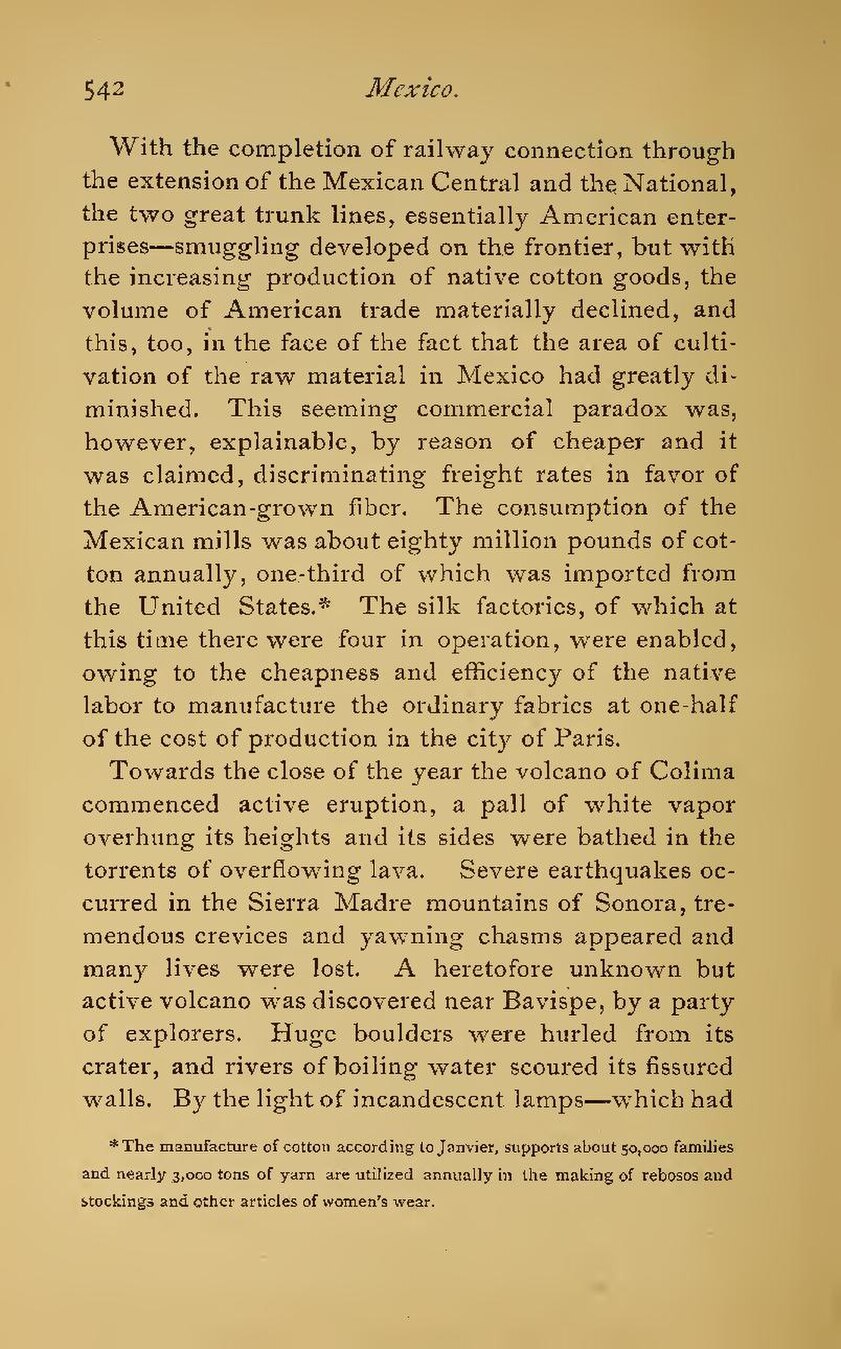With the completion of railway connection through the extension of the Mexican Central and the National, the two great trunk lines, essentially American enterprises—smuggling developed on the frontier, but with the increasing production of native cotton goods, the volume of American trade materially declined, and this, too, in the face of the fact that the area of cultivation of the raw material in Mexico had greatly diminished. This seeming commercial paradox was, however, explainable, by reason of cheaper and it was claimed, discriminating freight rates in favor of the American-grown fiber. The consumption of the Mexican mills was about eighty million pounds of cotton annually, one-third of which was imported from the United States.[1] The silk factories, of which at this time there were four in operation, were enabled, owing to the cheapness and efficiency of the native labor to manufacture the ordinary fabrics at one-half of the cost of production in the city of Paris.
Towards the close of the year the volcano of Colima commenced active eruption, a pall of white vapor overhung its heights and its sides were bathed in the torrents of overflowing lava. Severe earthquakes occurred in the Sierra Madre mountains of Sonora, tremendous crevices and yawning chasms appeared and many lives were lost. A heretofore unknown but active volcano was discovered near Bavispe, by a party of explorers. Huge boulders were hurled from its crater, and rivers of boiling water scoured its fissured walls. By the light of incandescent lamps—which had
- ↑ The manufacture of cotton according to Janvier, supports about 50,000 families and nearly 3,000 tons of yarn are utilized annually in the making of rebosos and stockings and other articles of women's wear.
